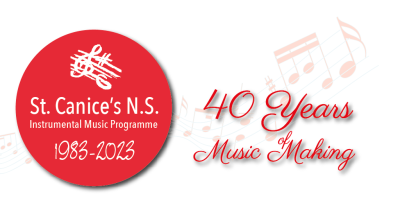In Second Class Violin, Viola, Cello and Double Bass players may wish to continue their playing by taking part in our Second Class lessons. These lessons involve preparation for our Junior Orchestra pieces, as they now become members. If they haven’t already taken up an instrument or wish to try something else they can take up Viola, Double Bass, Recorder or Pocket Trumpet. If numbers permit those second class students with lots of rhythm can move on from Junior Percussion to Senior Percussion lessons! If they are a singer now may be the time to enrol them in singing lessons. Perhaps they are interested in the Piano either? Most of our second class instrumentalists also benefit from enrolling in our Royal Irish Academy of Music Preparatory Theory classes which augment and supplement their instrument learning and will go on to take a theory exam in May.
RIAM Theory Preparatory
The beginner level theory lessons at Preparatory level are taken up in Second Class. An exam will then be taken in May of the following year.
The course is planned to provide a foundation for the study of Musicianship and to ensure a thorough grasp of music literacy, and is a helpful adjunct to the practical study of an instrument.
